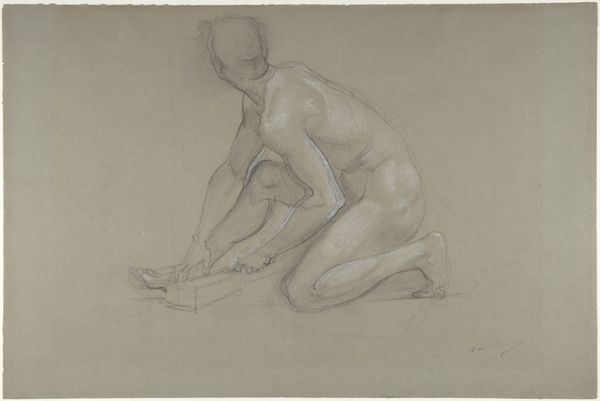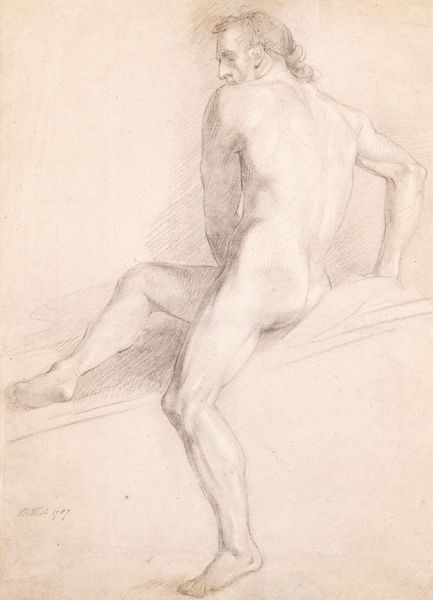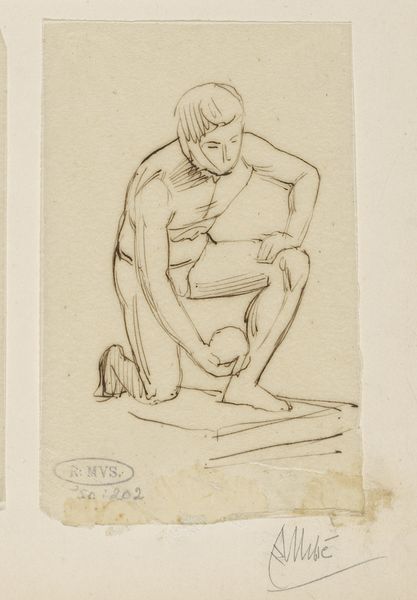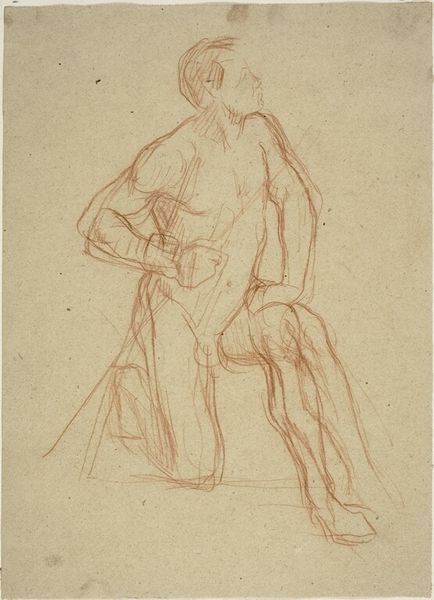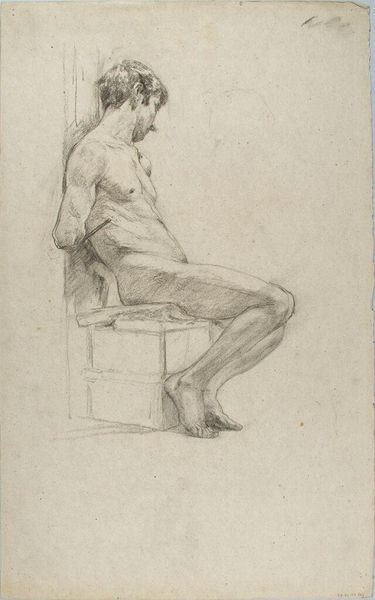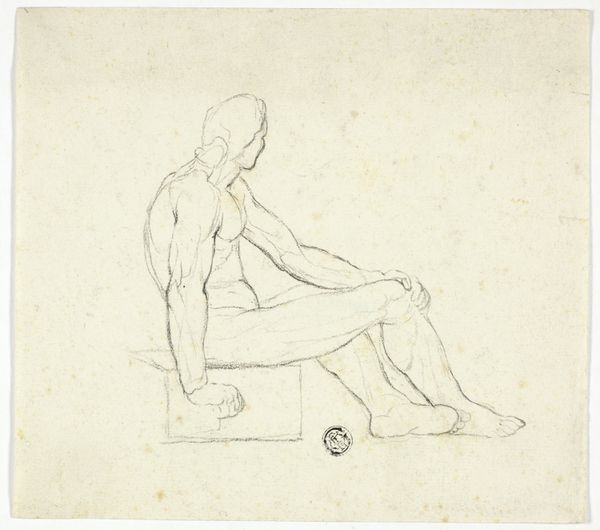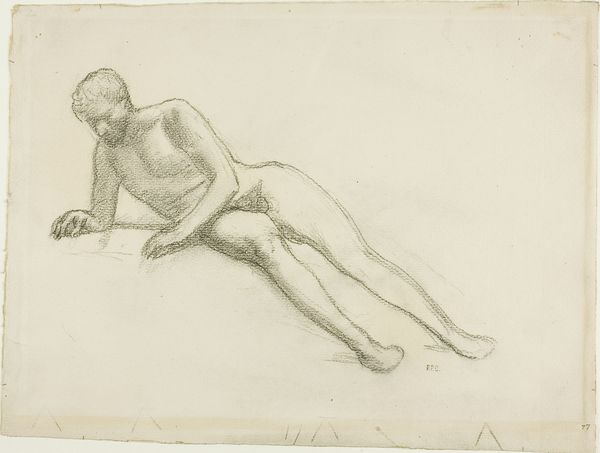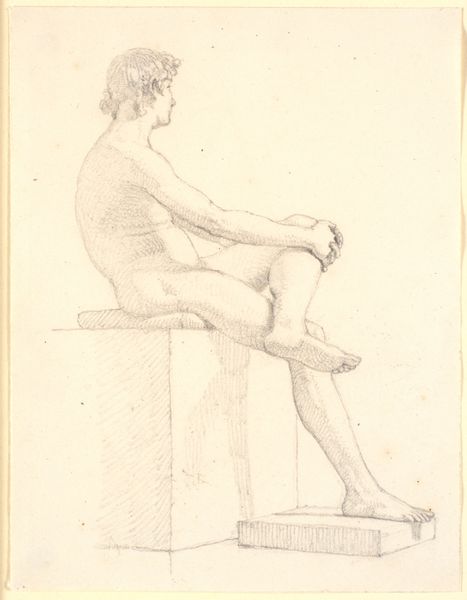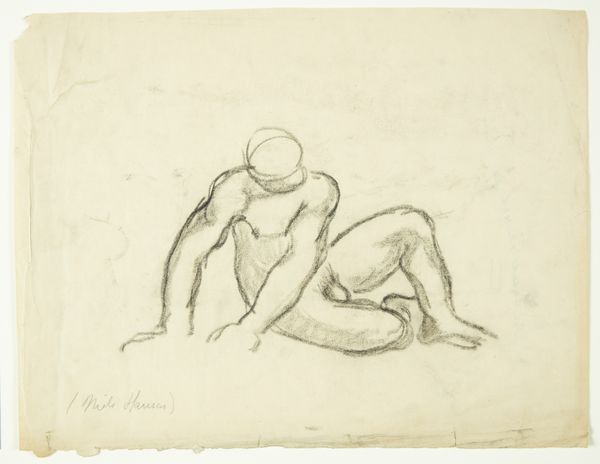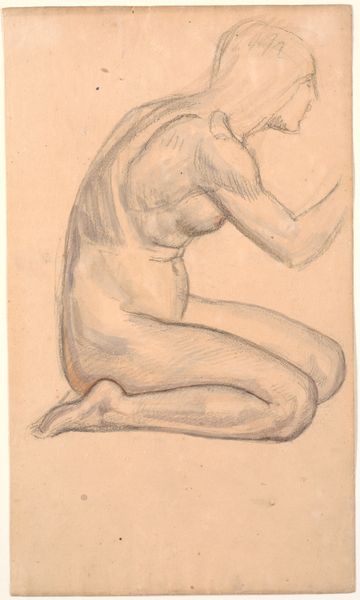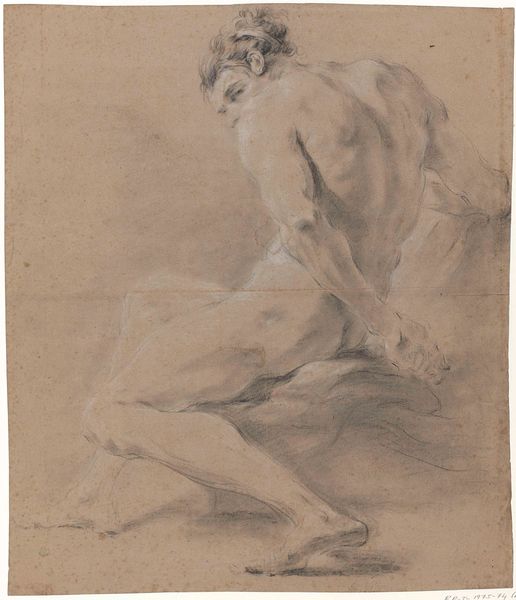
Studie af mandlig, nøgen, tilbagelænet model. T.h. to portræthoveder, den ene muligvis Constantin Hansen 1830s
0:00
0:00
drawing, pencil
#
portrait
#
drawing
#
classical-realism
#
figuration
#
pencil drawing
#
pencil
#
portrait drawing
#
history-painting
#
academic-art
#
nude
Dimensions: 215 mm (height) x 290 mm (width) (bladmaal)
Editor: Here we have H.W. Bissen's "Study of a Male, Nude, Leaning Model," from the 1830s, rendered in pencil. I'm struck by the vulnerability conveyed by the model's posture and the soft shading; what's your read? Curator: This drawing embodies the academic pursuit of representing the ideal male form. But, looking through a modern lens, doesn't the passivity of the model also speak to the limited agency afforded to those whose bodies are historically subjected to scrutiny and objectification within the artistic and power structures of the time? How does this historical context influence our understanding and ethical appreciation of the work? Editor: That’s a very insightful way to look at it! I hadn’t considered how power dynamics in that era might impact the artwork’s interpretation today. It's like seeing two layers, artistic skill, but also social commentary that time imprints upon it. Curator: Precisely. Think about how this drawing, in its time, would be used as a stepping stone towards history paintings or heroic sculptures meant to uphold specific social narratives. Examining the themes alongside their creation invites questioning. Did the artist grapple with these constraints, or perhaps subvert them in subtle ways we can only speculate about? Editor: I see, it opens up more questions about intention and societal influences, beyond just technique. Did such a study offer any potential for challenging the status quo, even unintentionally? Curator: Maybe through offering a naturalistic depiction rather than glorification, perhaps subtly resisting idealized stereotypes. By observing these supposed relics, we also reveal our current social priorities and theoretical frameworks. We get to see how art operates both within and against prevailing social forces. Editor: This was amazing! Thanks to this discussion I realize a nude artwork like this is never *just* about the form; it carries layers of historical and social baggage. Curator: Indeed, viewing it with a critical, historical eye helps us appreciate not just the aesthetic, but the conversations—often silent—happening within the work itself.
Comments
No comments
Be the first to comment and join the conversation on the ultimate creative platform.
